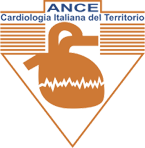We aim to evaluate the potential benefit and risk of addition of vorapaxar to standard medical therapy in patients who underwent coronary revascularization with either percutaneous coronary revascularization or coronary artery bypass graft surgery. We searched PubMed, EMBASE, the Cochrane Central Register of Controlled trials, and the clinical trial registry maintained at clinicaltrials.gov for randomized control trials evaluating the safety and efficacy of vorapaxar in patients who underwent coronary revascularization procedures with either percutaneous coronary revascularization or coronary artery bypass graft surgery. Event rates were compared using a Forest plot of relative risk using a random-effects model. The 5 studies (n = 24,025) that met all criteria were included in the final analysis. After coronary revascularization procedures, addition of vorapaxar to standard medical therapy was associated with reduction in the risk of myocardial infarction (MI; risk ratio 0.83 [0.75 to 0.92]) and ischemic stroke (0.011 [0.007 to 0.016]); however, it also resulted in significant increase risk of hemorrhagic stroke (1.57 [1.01 to 2.44]) and Thrombolysis In Myocardial Infarction major and minor bleeds (1.36 [1.07 to 1.70]). There was no significant difference in the risk of cardiovascular mortality (0.90 [0.73 to 1.09]), repeat revascularization (0.78 [0.23 to 2.70]), and stent thrombosis (0.95 [0.62 to 1.45]) in the vorapaxar and control groups. In conclusion, after coronary revascularization procedures, addition of vorapaxar to standard medical therapy was associated with reduction in the risk of MI and ischemic stroke and increase in risk of hemorrhagic stroke and Thrombolysis In Myocardial Infarction major and minor bleeds.
The American Journal of Cardiology, April 1, 2016 Volume 117, Issue 7, Pages 1059–1064
http://dx.doi.org/10.1016/j.amjcard.2015.12.051
A cura di Calogero Calcullo
